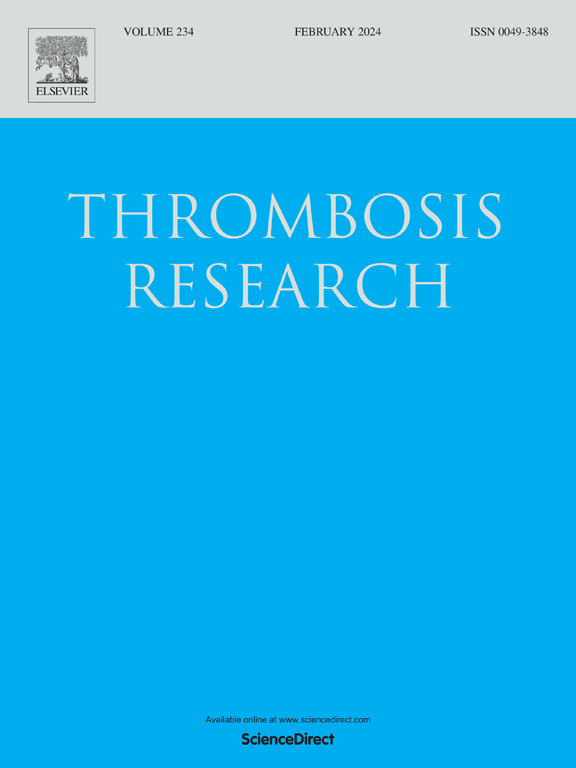A comparison of My Precise Dose and WAPPS-Hemo as dosing tools for optimizing prophylaxis in children with hemophilia A treated with BAY 81-8973
IF 3.7
3区 医学
Q1 HEMATOLOGY
引用次数: 0
Abstract
Background
Dense sampling served as the foundation for the conventional calculation of pharmacokinetic (PK) parameters. Individual PK can now be estimated via sparse sampling thanks to the development of Bayesian population PK (popPK). Both My Precise Dose (MPD) and the Web-Accessible Population Pharmacokinetic Service-Hemophilia (WAPPS-Hemo) use the popPK model of BAY 81-8973 to forecast personalized dosage.
Objective
To compare the PK profiles and dosage estimates provided by WAPPS-Hemo and MPD for prophylaxis in children with hemophilia A treated with BAY 81-8973.
Methods
Thirty-eight pediatric patients with severe hemophilia A were enrolled. After a 72-h washout period, each patient received a 50 IU/kg infusion of BAY 81-8973. PK parameters were calculated at three time points: pre-dose, 3 h, and 24 h after infusion. Dosing regimens to maintain FVIII trough levels at 1 and 3 IU/dL were determined using the WAPPS-Hemo and MPD models, respectively.
Results
Among the 38 pediatric patients with a median age of 5.7 years (range: 2.8–11.2 years), the MPD exhibited superior values for the half-life (T1/2) and area under the curve (AUC) in comparison to the WAPPS-Hemo, while demonstrating reduced clearance (CL) and steady-state volume of distribution (VSS). WAPPS-Hemo made more mistakes when predicting FVIII activity at 48 h (28.84 %) and 72 h (50.19 %), but only 12.45 % and 47.44 % of the time when predicting by MPD. Statistical analysis indicated a significant difference between the two techniques regarding individual dosage at both 1 IU/dL and 3 IU/dL. [(1 IU/dL: WAPPS-Hemo 12.1 (9.3, 17.1) vs. MPD 7.3 (5.5, 9.9), P < 0.001; 3 IU/dL: WAPPS-Hemo 36.3 (27.8, 51.3) vs. MPD 21.9 (16.4, 30.0), P < 0.001).].
Conclusions
The pediatric popPK model such as MPD tailored for conditions can more precisely represent the PK characteristics and metabolic conditions of Chinese children in real-world settings, highlighting its potential utility in the clinical care of hemophilia patients.
求助全文
约1分钟内获得全文
求助全文
来源期刊

Thrombosis research
医学-外周血管病
CiteScore
14.60
自引率
4.00%
发文量
364
审稿时长
31 days
期刊介绍:
Thrombosis Research is an international journal dedicated to the swift dissemination of new information on thrombosis, hemostasis, and vascular biology, aimed at advancing both science and clinical care. The journal publishes peer-reviewed original research, reviews, editorials, opinions, and critiques, covering both basic and clinical studies. Priority is given to research that promises novel approaches in the diagnosis, therapy, prognosis, and prevention of thrombotic and hemorrhagic diseases.
 求助内容:
求助内容: 应助结果提醒方式:
应助结果提醒方式:


